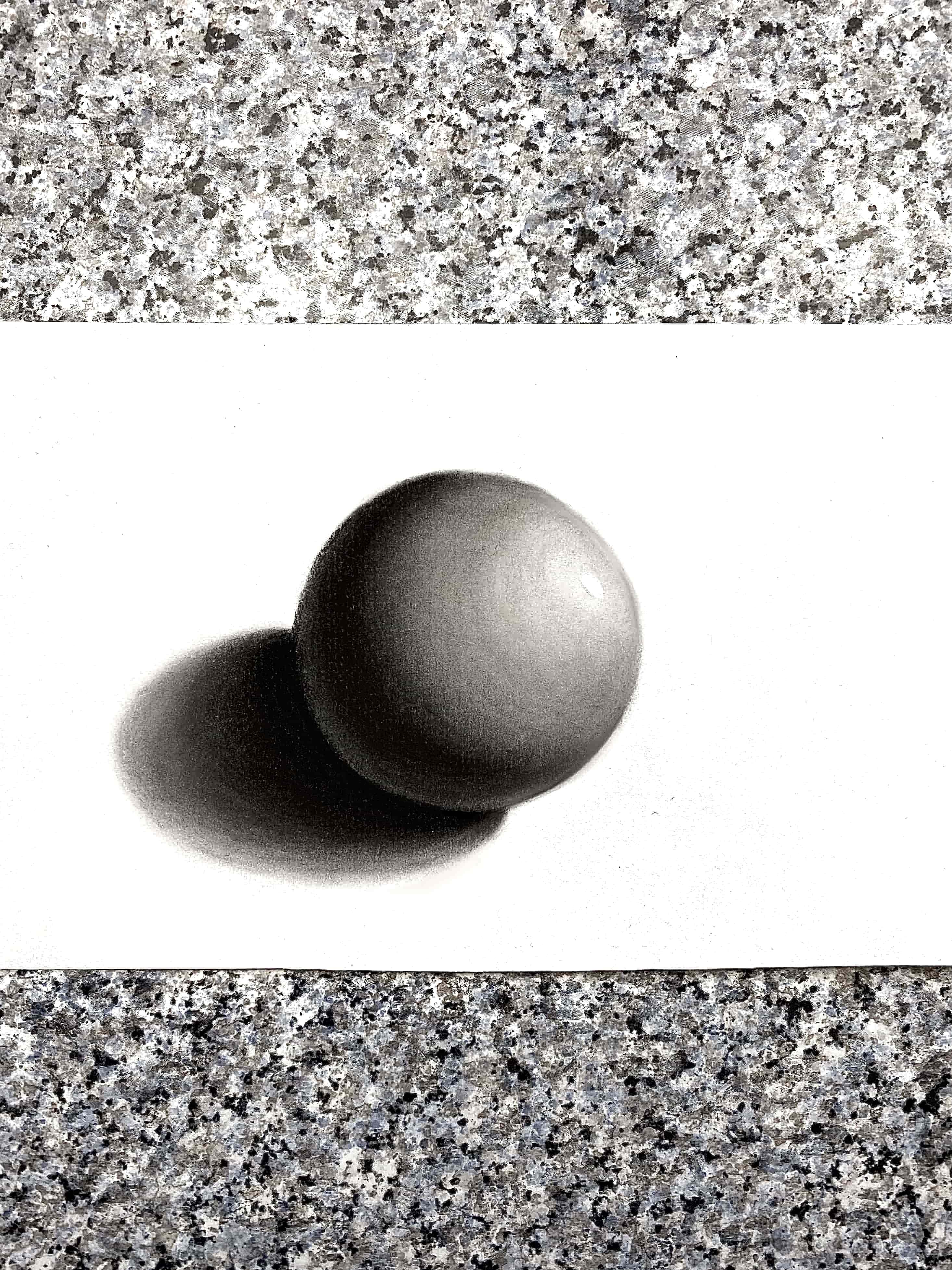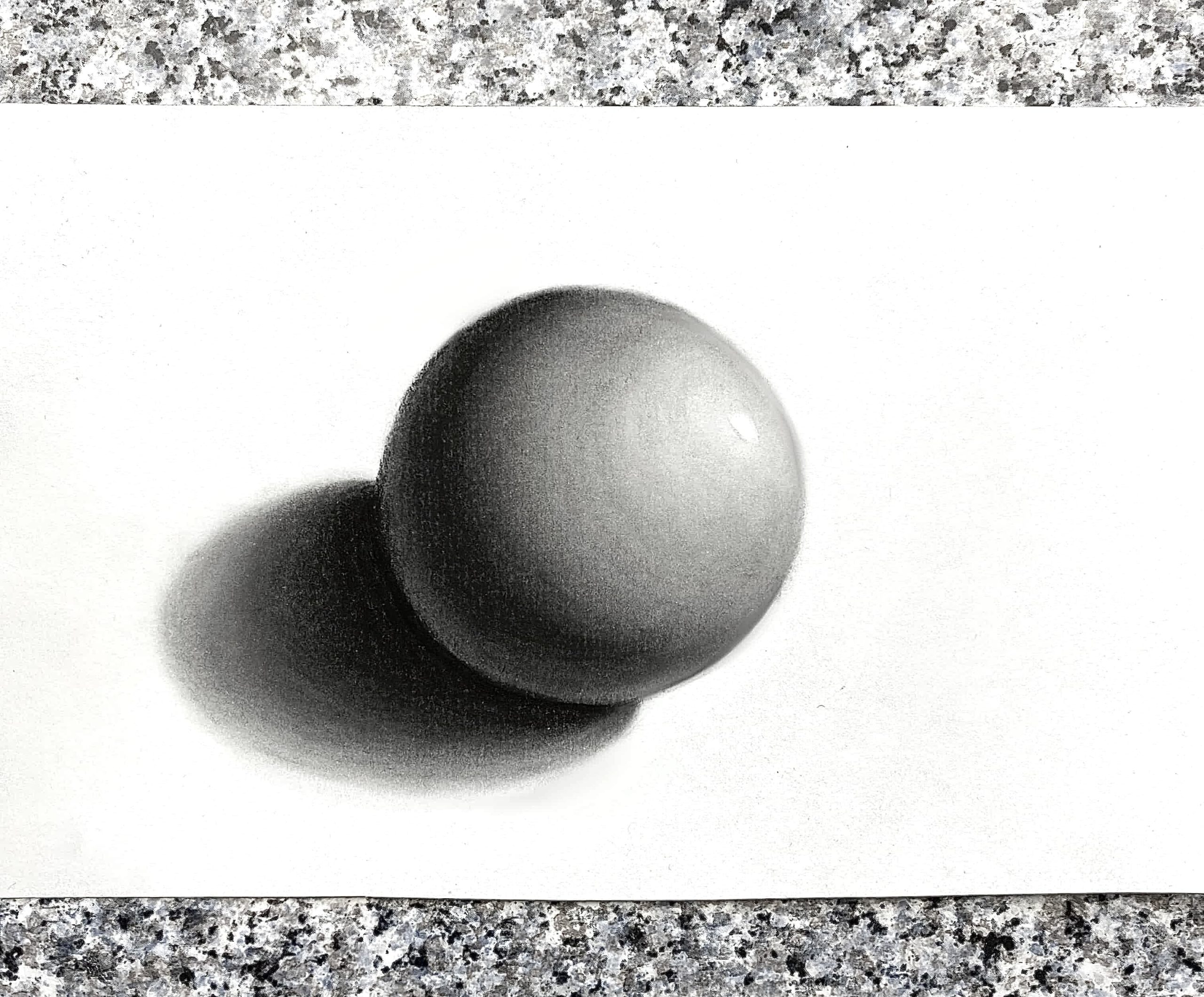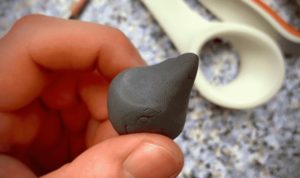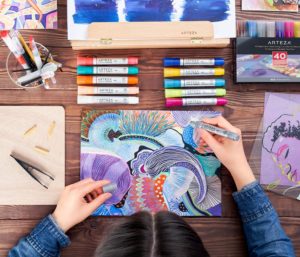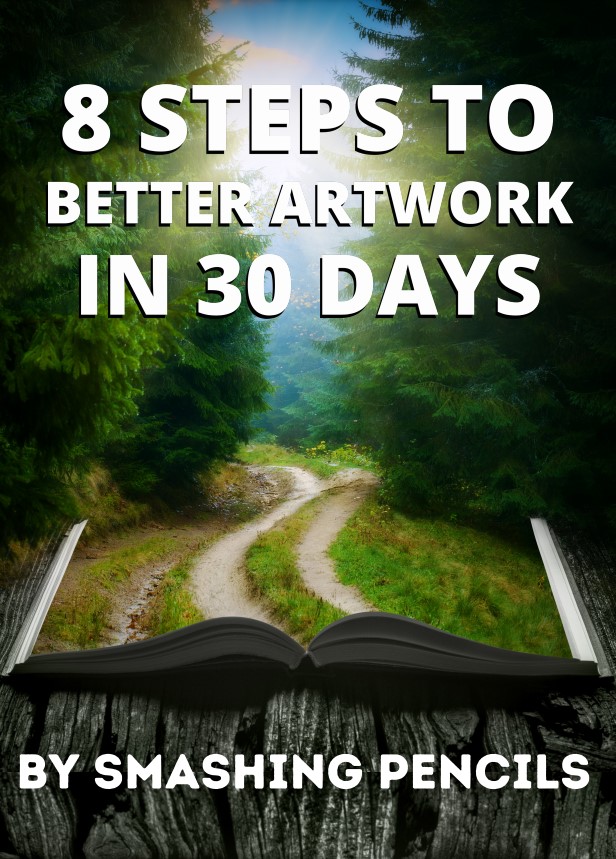Shading a sphere with charcoal is such a fun and challenging exercise. The forgiving nature of charcoal makes is easier to shade and blend than graphite. Here are 10 steps showing you exactly what to do.
To shade a sphere with charcoal, you need a charcoal pencil or stick, q-tips/any blending tool, and a kneaded eraser or any small eraser. Start with the outline of the sphere and its shadow and repeat the process of shading and blending until you end up with a smooth, realistic sphere.
What do you blend charcoal with?
You can use a variety of art supplies to blend charcoal. These include blending stumps, tortillons, tissue paper, q-tips, and chamois. You can use your finger too, although it is less accurate and make more of a mess.
Each blending tool is shown and described here.
Step 1: Draw the outline
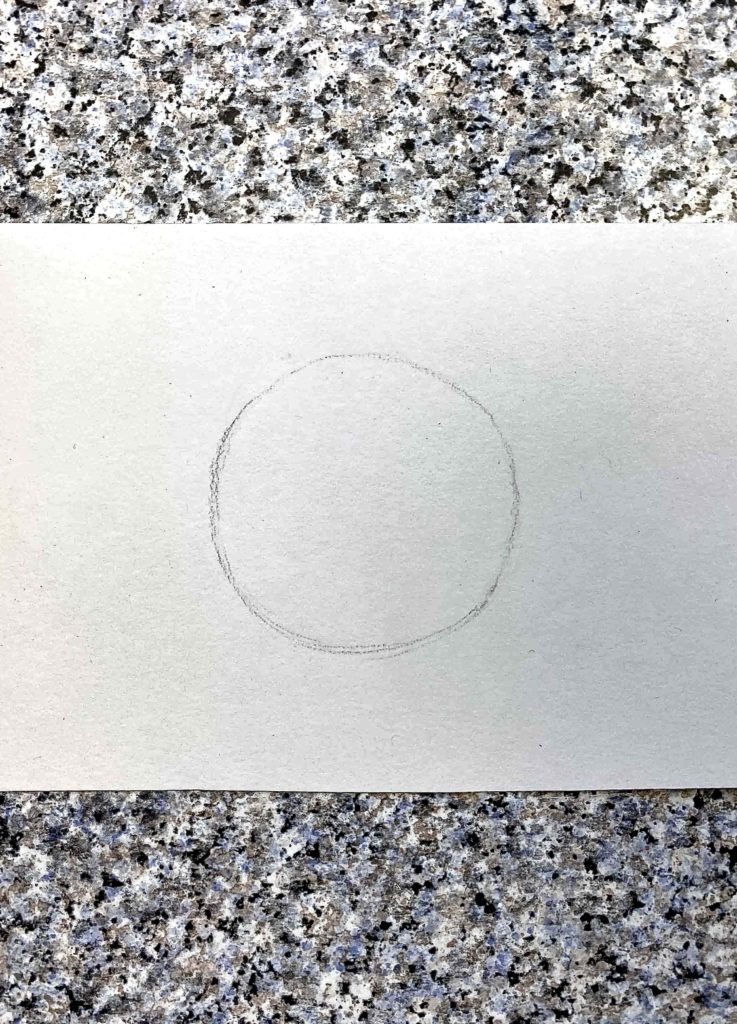
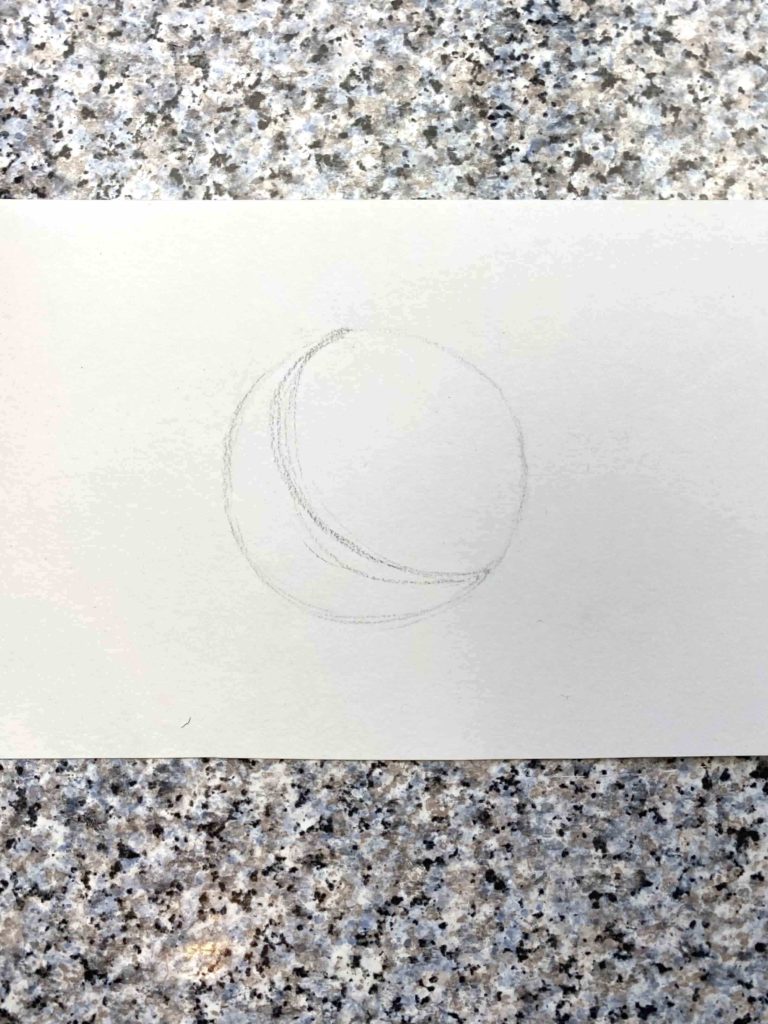
Draw a circle as best you can. Don’t worry, it doesn’t have to be perfect right now! Just make sure you go very lightly with your charcoal pencil, as lightly as you can.
Next, you want to draw the line that separates to lights from the shadows.
Choose a point in your head to imagine where the light is coming from.
Draw an elliptical shape on the sphere. This will separate the light side and the dark side of the sphere.
Step 2: Shade and shadow


Shade the left side of the sphere (the side facing away from your imaginary light source).
For now, use medium pressure with your charcoal pencil. It can be the same darkness everywhere for now.
Next, draw another elliptical shape for the shadow. Think of the shape that the shadow would be if the light was coming from the right. The sphere usually sits somewhere around halfway into the shadow, so keep this in mind when drawing it!
Step 3: Occlusion shadow and cast shadow


Draw a dark line where the sphere meets the shadow. This is called the occlusion shadow. It’s the darkest part of the shadow, because very little reflected light can hit it. Keeping this darkest is extremely important for a realistic look!
Shade in the rest of the shadow, just like you did when shading the sphere.
Step 4: Blending the sphere


Using a q-tip (or any type of blending tool) start blending at the lightest part of the shadow, where the shadow meets the light.
By far the most important thing to do here is to blend using tiny circular motion. Back and forth motion will result in blotchy, unsmooth shading.
Make sure you keep a consistent, light pressure while blending in tiny circular motion (and try to keep the size of the circular motion consistent too!)
Blend the sphere, and then move onto blending the shadow, using the same method.
You don’t need to worry too much about it looking perfect at this point, this is only the first pass. Just aim to smooth it out for now!
Step 5: Shade again, blend again

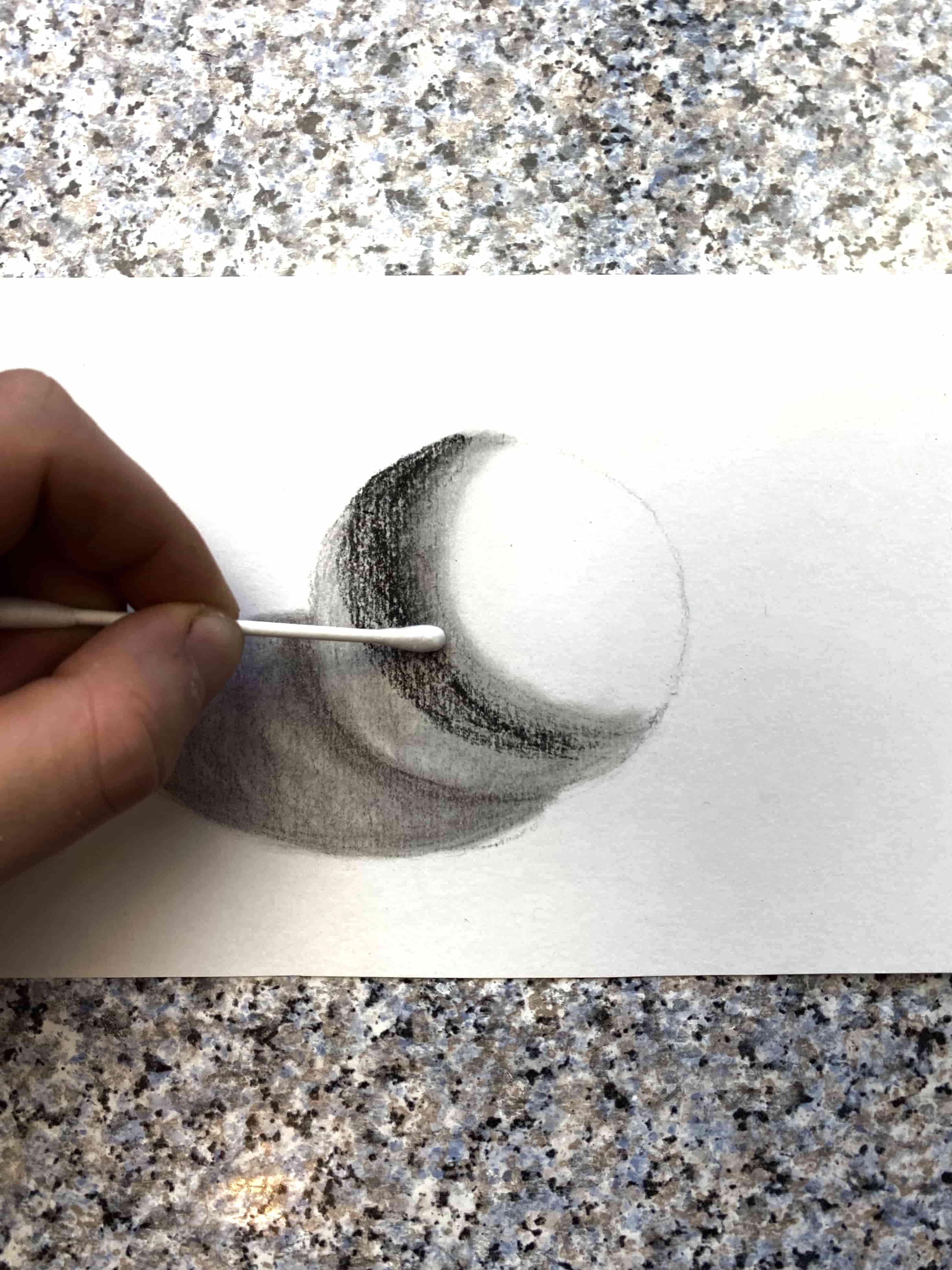
Here’s my favorite part of drawing a sphere with charcoal.
The darkest part of the sphere will be somewhere in the middle of the shaded region, but a little closer towards the light side (see image). This is called the core shadow.
Just like the darkest part of the shadow (the occlusion shadow), keeping this part of the sphere the darkest is the key to making it look realistic!
Draw in this shadow (think of it as a fang shape). Use harder pressure this time for the whole “fang”.
Once drawn, blend it again using a fresh q-tip. I like to use one end of the q-tip to blend the from one side of it to the center of it, and then use the other fresh end to blend from the other side to the center.
Step 6: Blend the shadow...again
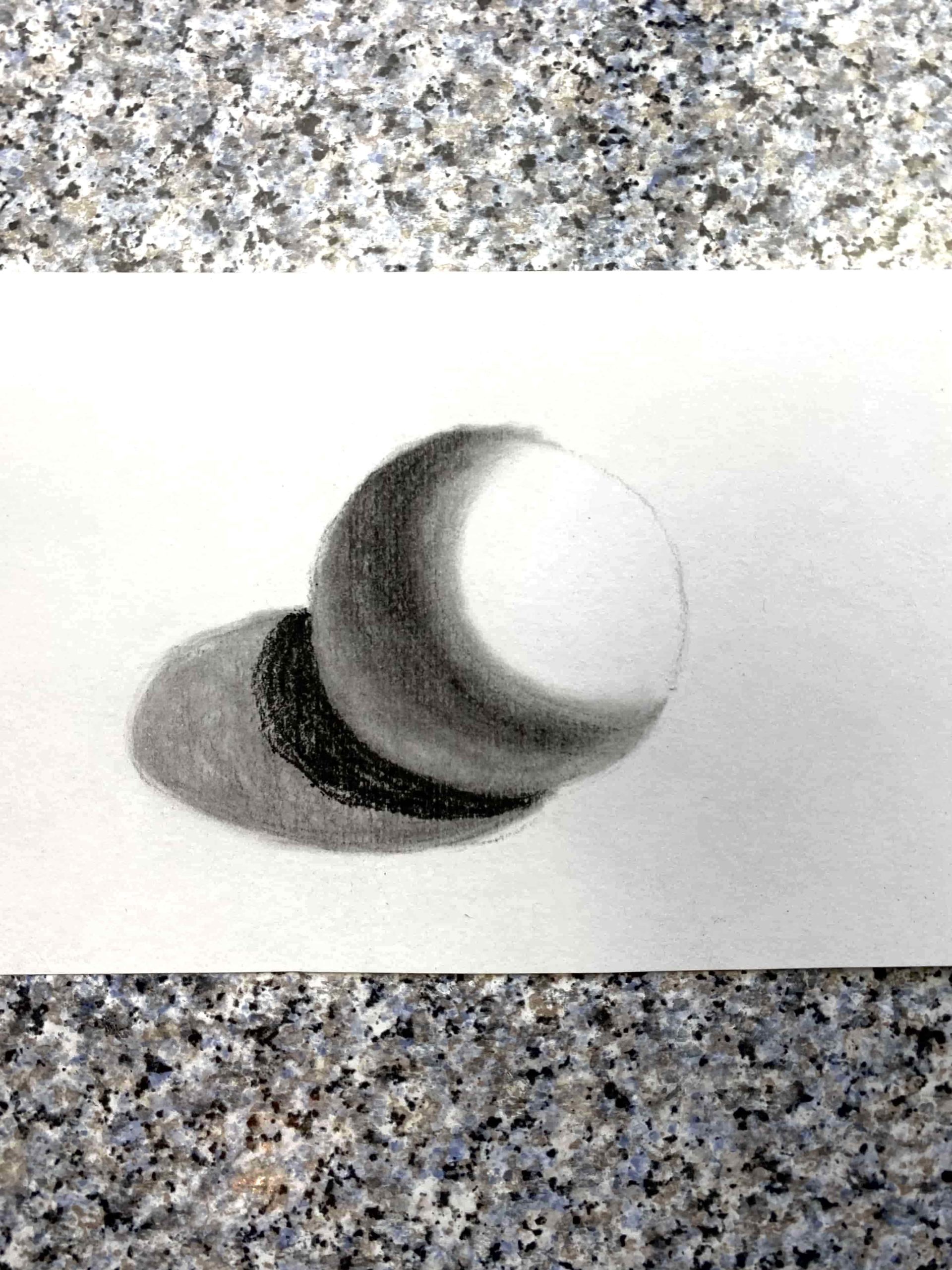

Just like the last step, draw over the darkest part of the shadow.
For the shadow you want to draw a crescent moon shape.
It works well for this part to blend from where the sphere meets the shadow all the way out to the left side of the shadow. This works because you want to spread that charcoal across the entire shadow, keeping the occlusion shadow the darkest.
Step 7: Draw in the halftone guidelines
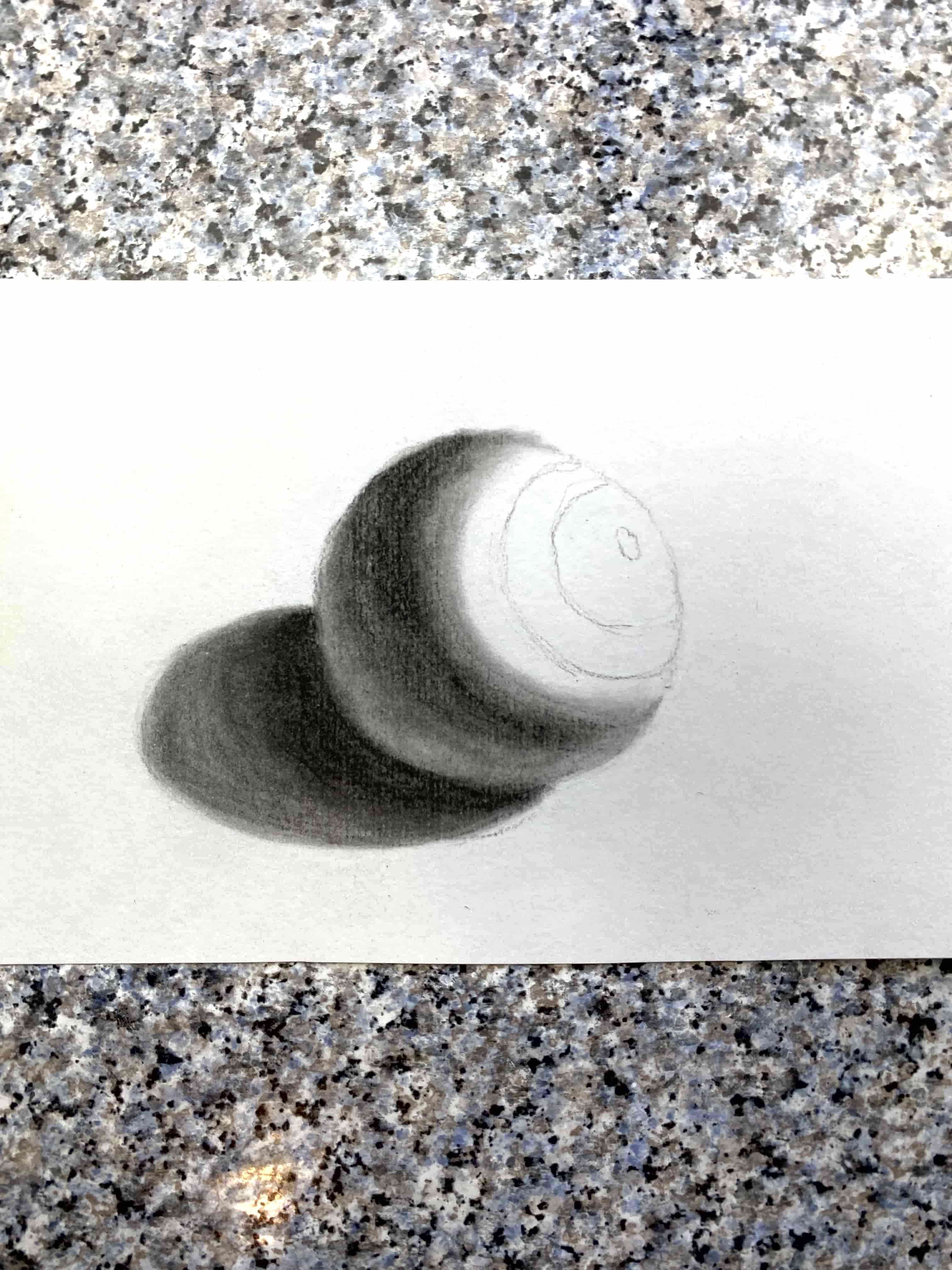
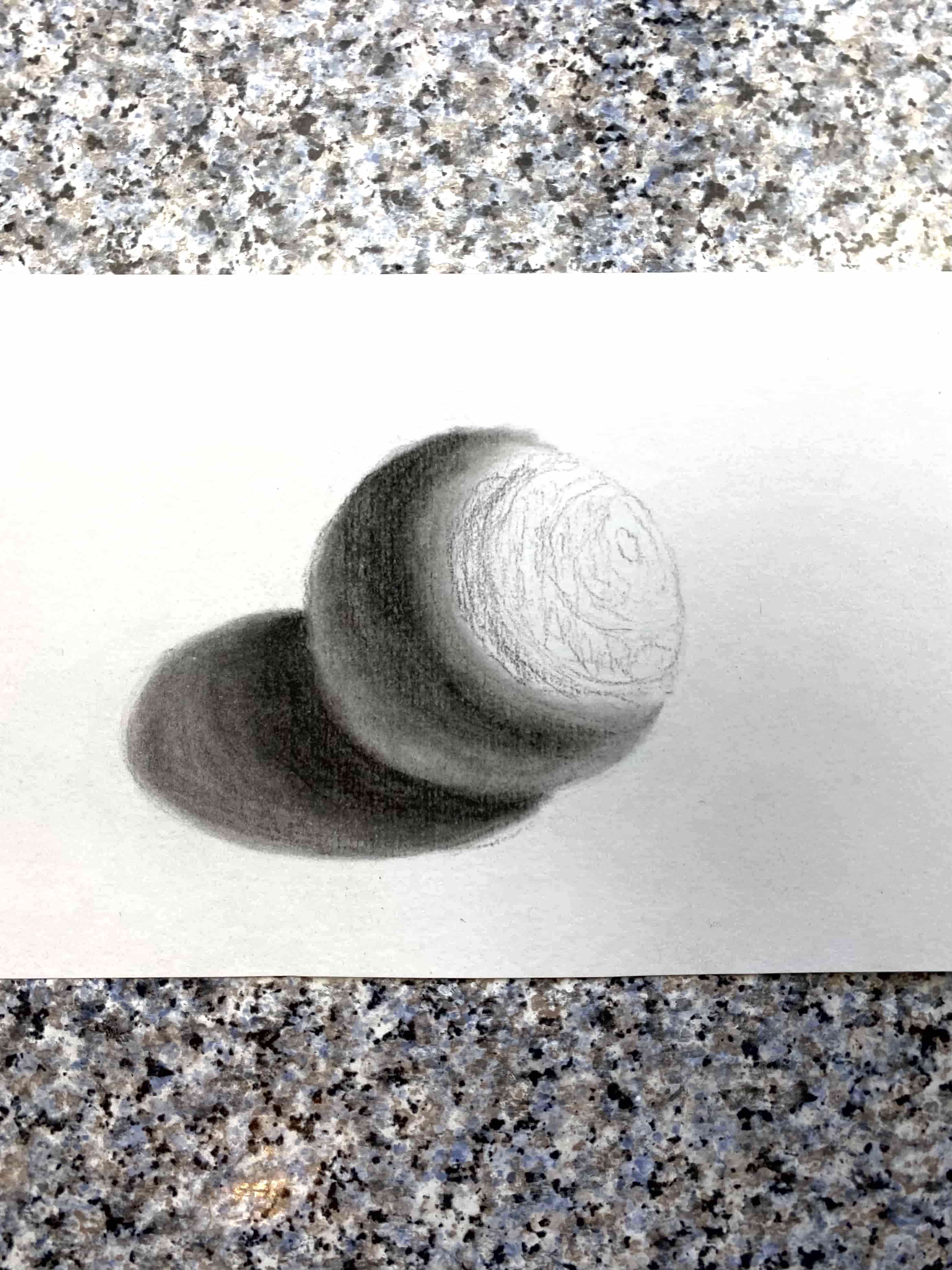
Halftones are just the part of the drawing the aren’t in shadow, but aren’t highlights either.
I like to draw rough outlines (very gently!) for the highlights and the halftones. I drew them a bit harder here for demonstration but you should draw them in as lightly as you can.
You can see from the image the little circle on the right will be the highlight, the next circle will be slightly darker, and the next darker, until it blends in with the already shaded part.
Lightly shade the circles according to how light you want them to be. It looks messy in the picture because I’m using extremely light pressure. This will allow you the blend nicely, so you don’t have to worry about it looking smooth yet, as long as you keep it light! (I’m talking barely-touching-the-page light!)
Each circle looks pretty similar in the picture, but there is more charcoal in the biggest circle, and less in the next, and very little in the next.
Step 8: Smooth out the halftones

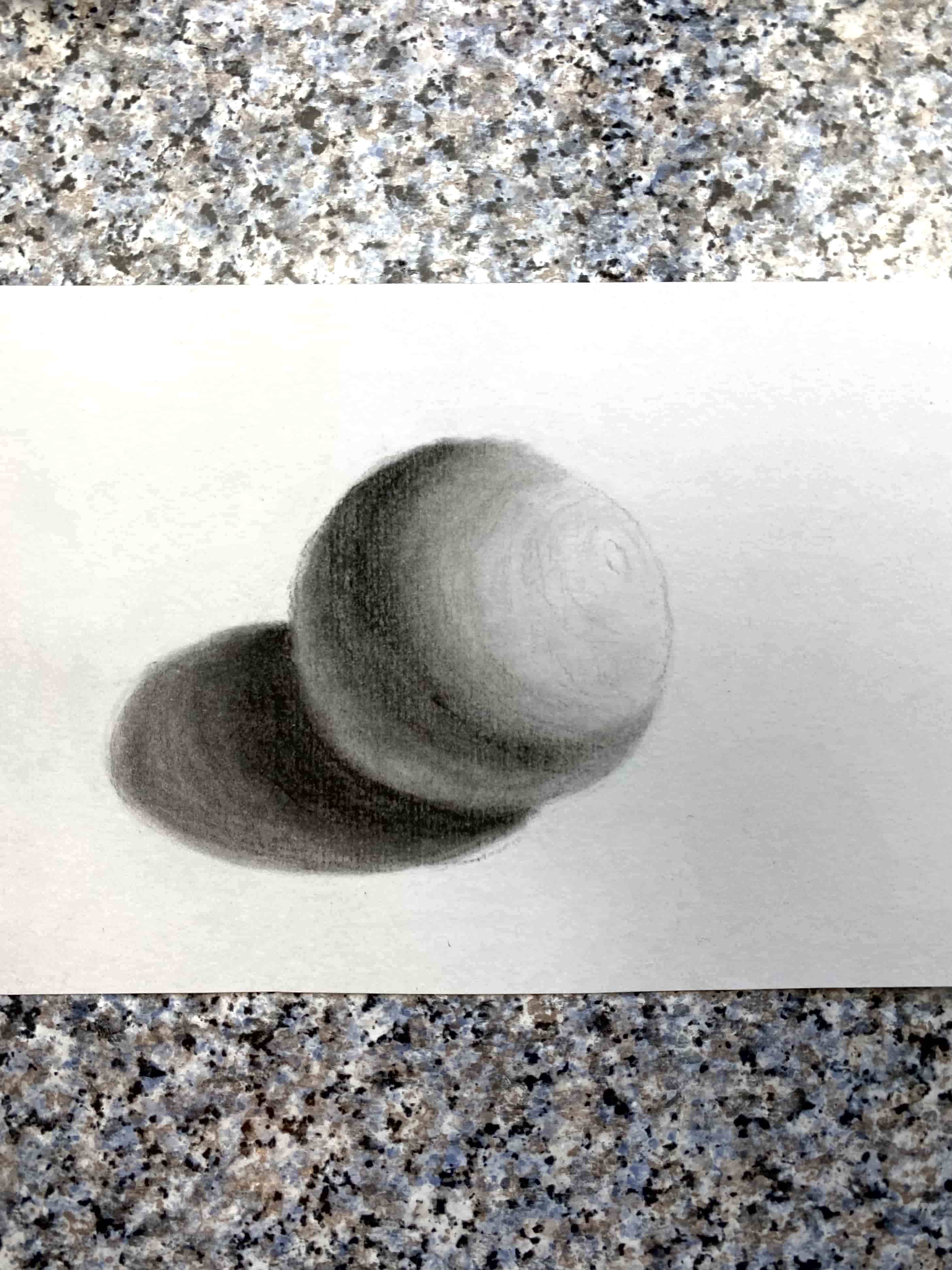
Using a fresh q-tip, start from the lightest part (around the highlight) and blend around it, and then around that, and then around that.
All this blending should be in tiny circular motion (so yeah, a circular motion of tiny circular motions…that sounds way more complicated than it is!)
You sphere should be starting to take shape now!
Step 9: Repeat...again!
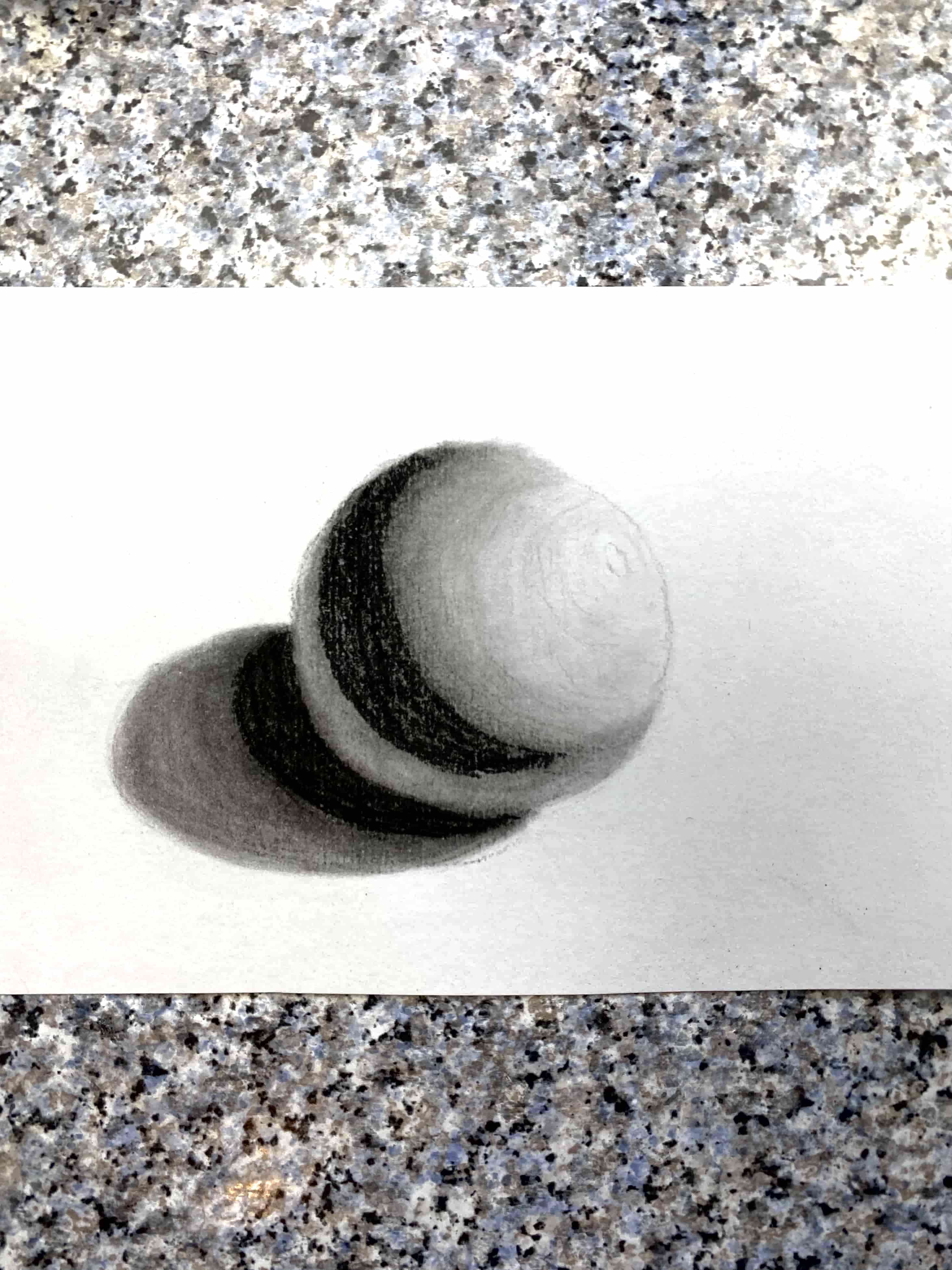

Now you want to repeat the shading and blending that you did earlier on both the sphere and the shadow.
Each time you do this it adds more and more depth. You can do this as many times as you want until you’re happy.
Always keep in mind that you want the core shadow to be the darkest, gradually getting lighter as you blend to the left, and the exact same for the shadow.
Step 10: Tidy up and re-blend the halftones
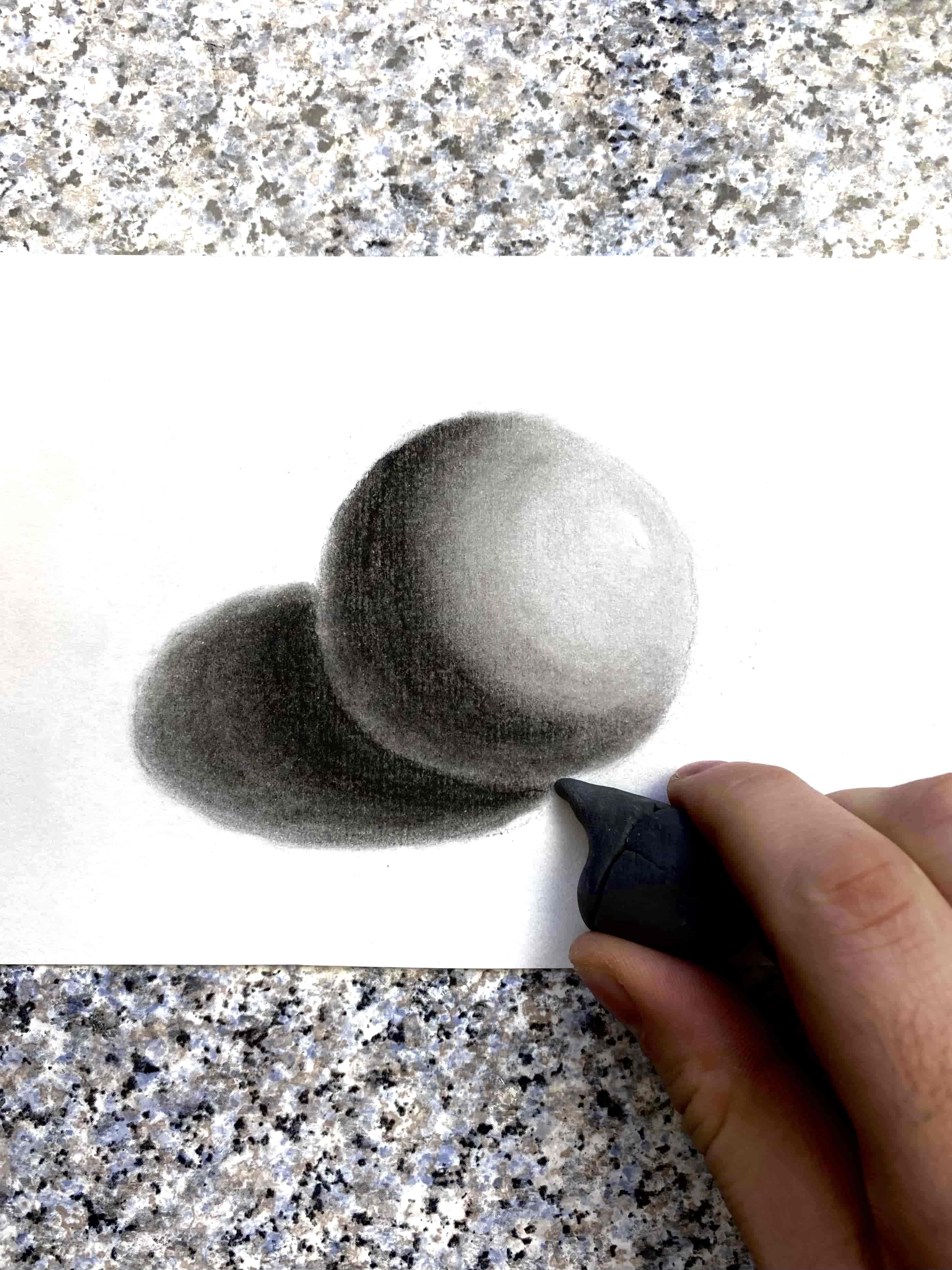
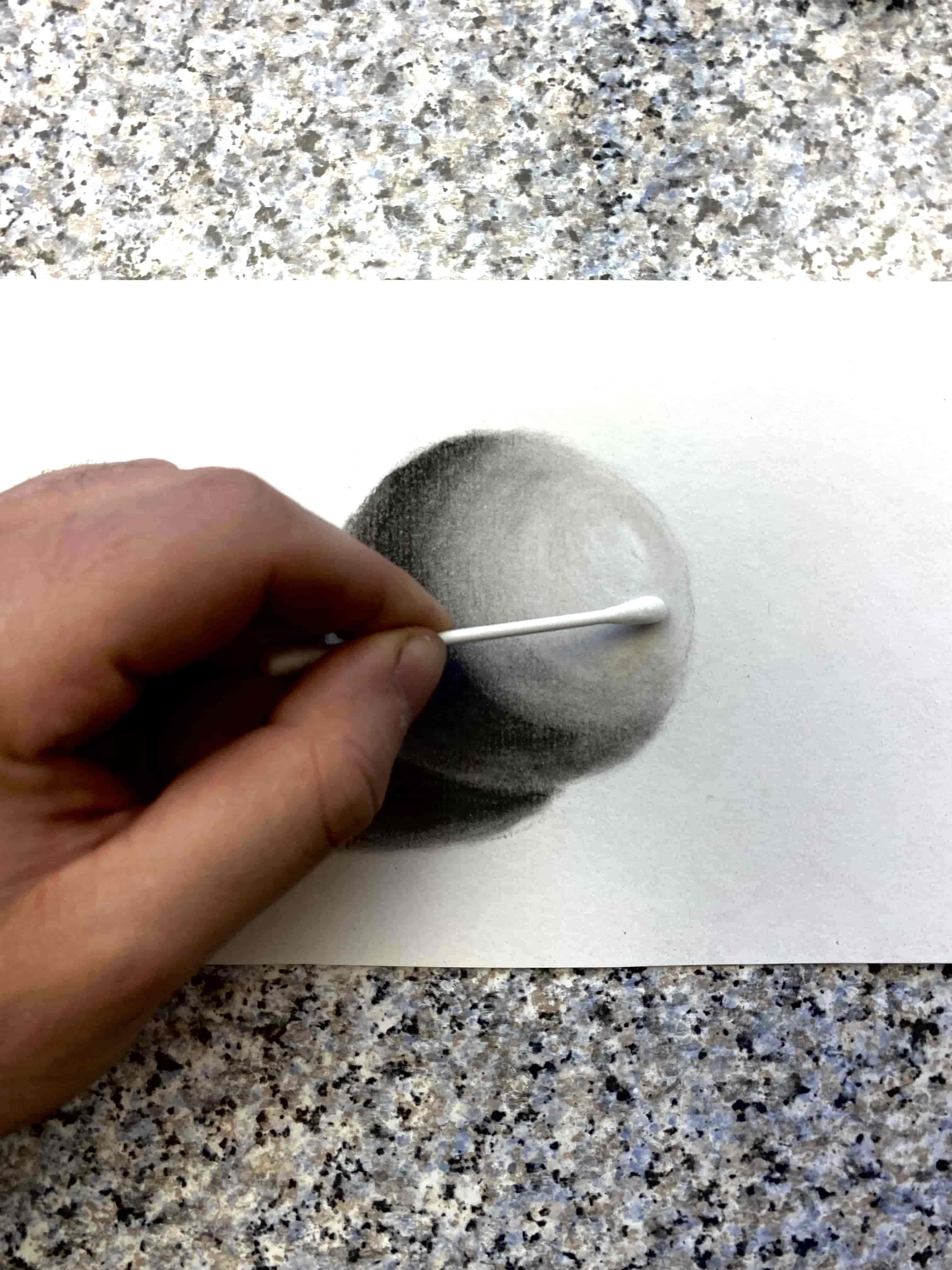
Use an eraser the clean up. I like to use a kneaded eraser because you can mould it to a sharp point, but you can use any eraser. Try to make the sphere more round if there are parts coming out from it. If there are parts where you need to add more to you can use a q-tip to blend some charcoal into them, and then erase any excess.
The two points where the shadow meets the sphere (one shown in the image) are important to get right. Tidy them up so that the shadow has a nice elliptical shape, curving where it meets the sphere. That curving is very important.
Once you’re done tidying up, use a new q-tip to smoothen out the halftones. Start from the highlight and blend just like you did earlier. You want it to be as smooth a transition from light to dark as you can.
Once you’re done, you can erase inside that tiny circle you drew earlier for the highlight. This really makes the drawing come to life!
And you're done!
Repeat any steps to make sure it’s nice and smooth, as well as tidying up around the sphere and shadow, and altering the size of the shadow if you need to.
Eventually you’ll end up with an awesome looking sphere!
Don’t worry if it doesn’t turn out exactly how you wanted – shading a sphere is challenging, with a lot of subtle things needed to get it looking right.
But don’t worry, each time you draw one you’ll get better and better.
As Thomas Edison said, “Every wrong attempt discarded is another step forward”.
Have fun!
